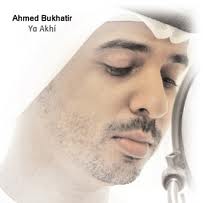

The Marsawi is composed of two parts of contrasting rhythm and character.Įach part is comprised of strophes ( qatibât) linked by cadences and Mohamed Abu Hamid, the 'âita genre grew from its simplest form ofĮxpression, al muqlâ' (the distich), to become over time an elaborateĬomposition best exemplified by the Marsawi variant. His house attracted the best musicians and singers whose With the Qaîd 'Îsa ben 'Umâr al 'Abdi who was, it seems, aĬonnoisseur. The second half of the 19th century the 'âita had its hours of glory The 'âita of Wlad Hmar is a good example of this. The group wears women's clothes and imitates women's voice and dance. In cases where the latter are absent, one of the men of The 'ayüt are often sung by a group of mixed The exception of Za'riya, which is monorhythmic, all of the 'ayûtįeature changes of rhythm, usually in three progressively faster Its repertoire limited to several examples of the genre. Principal variants, there exists at Safi a special 'âita called Haçba, 'âita takes different qualificative names by region it is MarsawiyaĪlong the coast, Za'riya, Mellaliya and Jabaliya. The act of calling has several otherĬonnotations - anticipating, searching, asking for inspiration. We prefer the first version since it isĮffectively a call - nearly all of the 'âitas begin with the invocation According to the second, it would be a deformation The first, it would be a derivation of the verb 'ayyat (to call, inĭialectical Arabic). Instrumental part that introduces the trance.ĭifferent interpretations can be made of the word 'âita.

Hadra of the Hmadsha of Essaouira, where it refers simply to the 'âita is also used to refer the song of the Jbala, incorrectly referred Al 'âita is also found in the plains of Z'ayer, inīeni Mellal and in the Hawz, for which variants are named. Regions of Shawiya, Dukkala and 'Abda, that is to say, in theĬasablanca-Safi axis. Specifically, the genre is practiced in the It is primarily in the plains bordering the Atlantic where al 'âita I wonder if it's a traditional melody that Najat borrowed or if this track borrows from Najat.įrom Ahmed Aydoun's Musiques du Maroc, Casablanca: Editions EDDIF, 1992, pp. UPDATE: Forgot to mention - Track 2 "Bâd Menni" features the same melody as Najat Aâtabou's famous "Shouffi Ghirou" (as featured here). I picked up the tape in 2012 in Kasba Tadla or Beni Mellal. Unfortunately the shikhat singers featured on this recording are unidentified, and I can't tell how old these recordings may be. (Hammer - hoping you may weigh in with some info on Shikh al-Moutcho - I notice that you mentioned his name in the aforementioned comments - any info is, as always, greatly appreciated!) In comments on a previous post, Hammer dissertated on âita zaêriya and described the practice called "Hisab Al-Za'ari" as a competition between singers. I love pieces like this - short vocal couplets alternate with long passages of doing-it-to-death viola riffing, and are punctuated by syncopated accents on the bendir. The centerpiece of this tape (for me at least) is the 12 minute "Hsab Zaêri". (These tracks are worth checking out though - âita with ghaita is pretty unusual!) lists an Ahmed Al Moucho, but most of the tunes with his name feature the ghaita oboe rather than the viola. Today's post features yet another cassette from the Hicham Atlas imprint, this time featuring a violist called Shikh al-Moutcho.

For a deeper analysis of the aesthetics and powerful association held between âita and regional identity, check out the work of ethnomusicologist Alessandra Ciucci. For those interested, I translated below a few paragraphs from Ahmed Aydoun's Musiques du Maroc to give some basic musical dimensions of âita and a few interesting tidbits of information. I wish I could give a better overall description of the genre and its variants. It's well-loved in its own right and it serves as the basis for much of Moroccan chaâbi music. It's among the most important genres of Arab music in Morocco. I've referred to Âita with frequency in my posts, and with good reason.



 0 kommentar(er)
0 kommentar(er)
